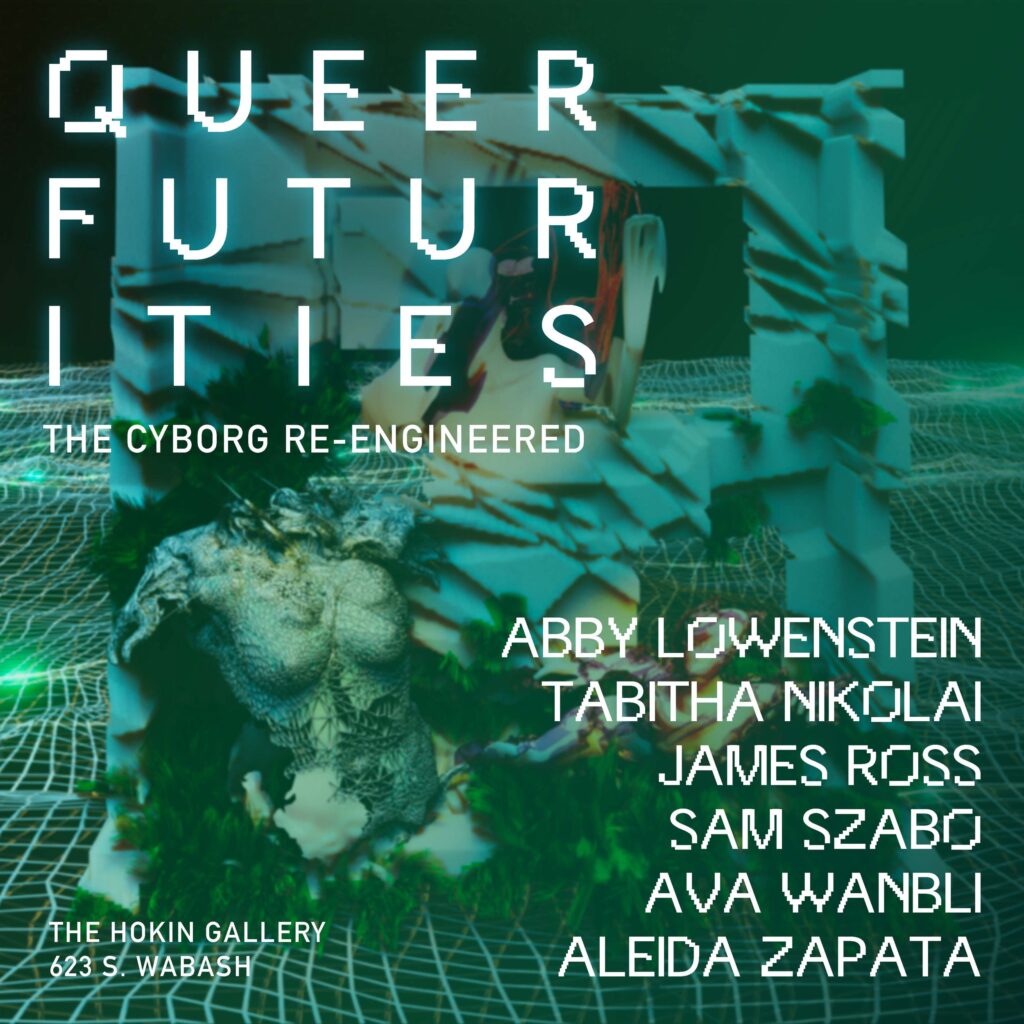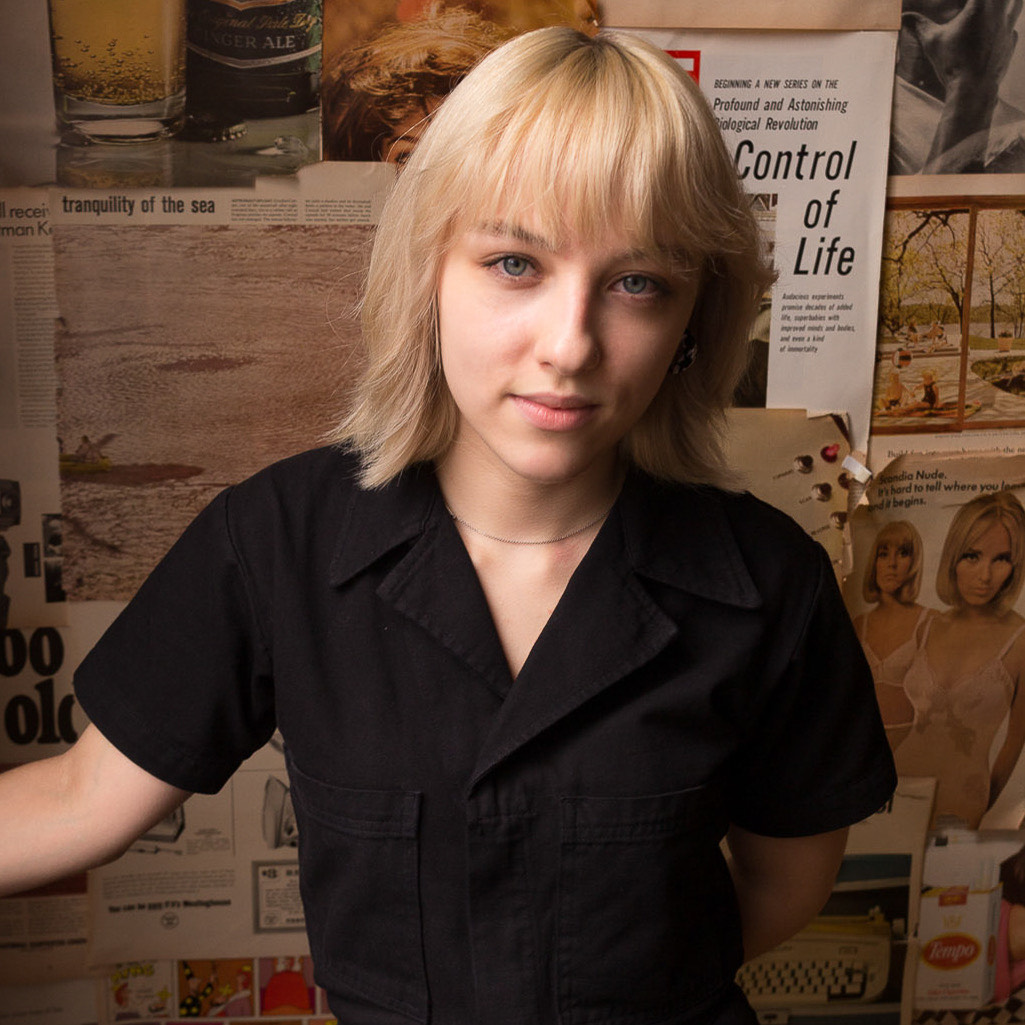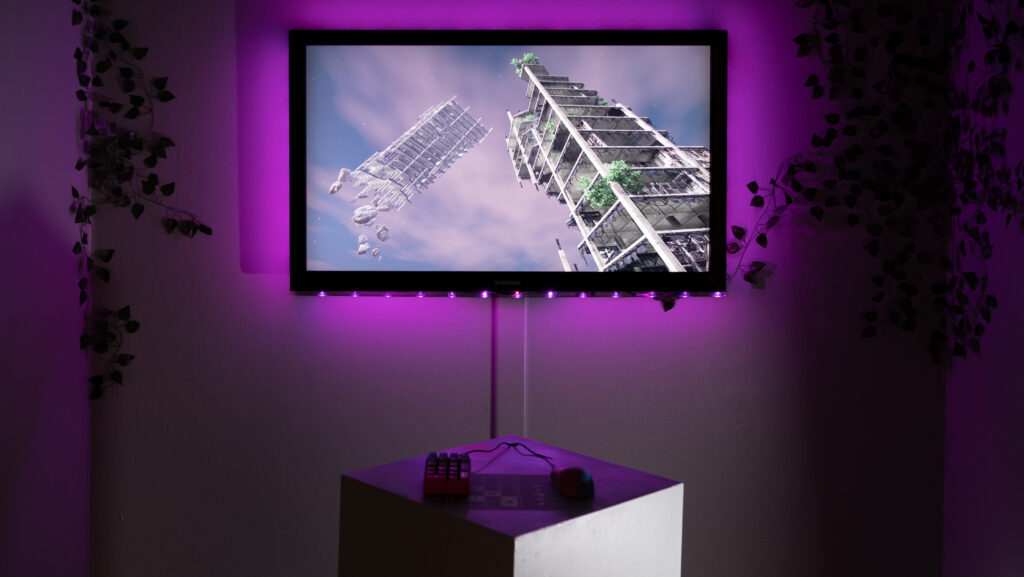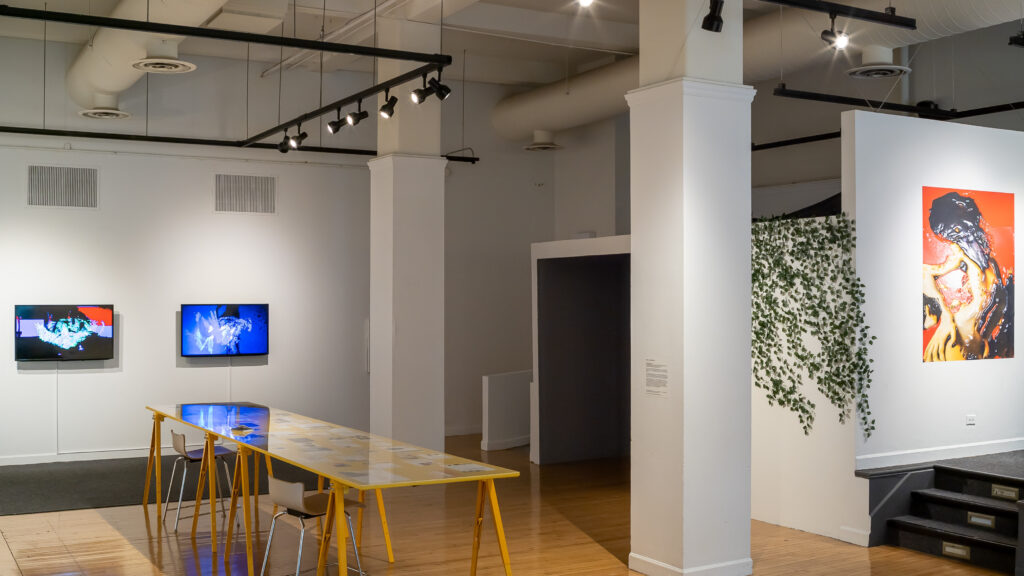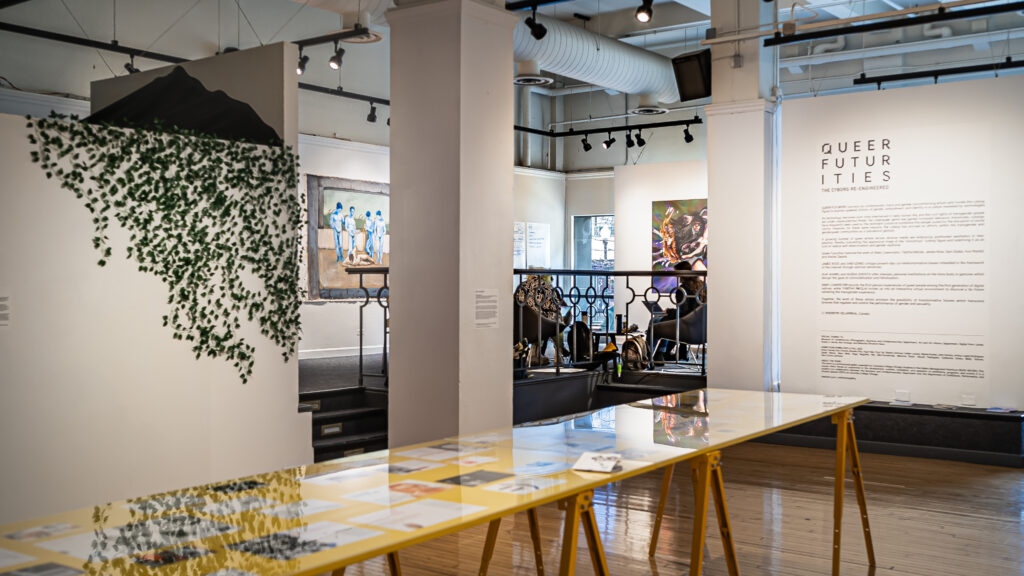Queer Futurities: The Cyborg Re-engineered
Queer Futurities is inspired by research conducted by Sheridyn Villarreal’s art history thesis, Trans/Futurities: Queering the Cyborg as A Strategy of Transgender Disidentification, which was awarded the Hollis Siegler Manifest Award at the 2022 Art & Art History Symposium: When Words Meet Images. They are an art historian and independent curator based in Chicago, IL.
Villarreal received their BA in Art History with a concentration in Modern and Contemporary Art from Columbia College Chicago in May 2022. Their areas of scholarly research include intersections of art and technology, queer art and theory, and avant-garde art movements of Latin America and Latinx diasporic communities.
We spoke to Villarreal about their inspiration and what led them to build this exhibition.
1. Can you tell us a bit more about the inspiration behind the Queer Futurities exhibition, and how it relates to your art history thesis on Trans/Futurities: Queering the Cyborg as A Strategy of Transgender Disidentification?
The conceptual foundation of “Queer Futurities” was adapted from the research I undertook while writing my art history thesis, which analyzed the cyborg body as it is represented in visual art, as a metaphor for queer, especially transgender experiences of embodiment, sexuality, and the transgression of social norms enforced by cis-heteronormative society. The works of art discussed in that paper were each created knowingly and purposely by the artists with that intent, embracing some of the historical tropes and aesthetic language of the “monstrous” cyborg figure to subvert that past weaponization against trans and queer people and transform its significance into a positive declaration of transgender autonomy and gender euphoria. “Queer Futurities” features the work of six contemporary transgender and gender nonconforming artists who are likewise employing the visual motifs of cybernetics or speculative futurism to engage in this same strategy.
2. How did you go about selecting the artists and works featured in the exhibition, and what criteria did you use to ensure that the works aligned with the themes of queerness and futurity?
Before anything else, I always meet with artists for a one-to-one interview or conversation. While there are established visual motifs associated with fictionalized cybernetics, I don’t believe that works of art need to strictly align to a particular “look” to effectively engage with the ideas implicated by the existence of cyborgs or androids. Ultimately, there is no one “correct” way to depict the future or futures, and oftentimes these futuristic settings or styles are simultaneously in conversation with contemporary conditions or experiences. When selecting the artwork featured in Queer Futurities, I made those decisions on the basis that the conceptual ideas present in the works of art aligned with the overarching theme of the exhibit and began to form a sort of conversation among the works, so that each one would contribute to or build off of another to explore these ideas from different perspectives or methods.
3. Could you share some examples of how the artists in the exhibition critique or subvert cis-heteronormative biases in their work, and what techniques or mediums do they use to accomplish this?
The artists featured in the exhibition are working across a diverse variety of mediums, ranging from painting to performance to interactive game design. No matter their medium, the artists are each engaging in a discourse on how our ever-increasing intertwining with advanced technologies challenges conventional boundaries of organic and synthetic, and other supposedly “natural” binaries which dictate and enforce human behavior and expression. “Advanced” technologies is also a relative term — what was revolutionary to a particular time is antiquated to another — and so the technologies referred to by the artists also cover a broader period of time than you might think, from the 1980s to the far future. When appraising the exhibition, you can split the works into two camps: those artists who employ the visual motifs of the cyborg and post-human organism as a metaphor by which to critique or record present-day conditions for trans and queer communities, or those who utilize it to propose far-reaching, speculative fantasies or futures which center the trans experience thereby subverting the historic demonization of the cyborg as a “boogeyman” of gender nonconformity.
4. How do you think the audience will respond to the exhibition, and what conversations or dialogues will it spark around issues of gender, sexuality, and the future of queer identities?
I can only hope that visitors walk away from the exhibition with some new insight or inspiration or joy. Despite the truly frightening transphobic and anti-LGBTQ conditions we currently face, this show is fiercely euphoric and defiant. It celebrates the artistry of immensely talented trans and gender nonconforming artists whose practices are advancing contemporary discourse and provides a record of our present moment. Queer cultures and communities are looking toward our futures because we have always existed and always will.
5. Lastly, what projects or exhibitions do you have coming up in the future, and how do you see your work and research continuing to push the boundaries of queer art and representation?
I have a few ongoing and upcoming projects in the works. One of which is that I am actually pursuing publication of “Trans/futurities” as a dedicated chapter in a forthcoming anthology on depictions of monstrosity in media, especially in how fictional monsters or their characteristics are oftentimes stand-ins or allusions to marginalized communities and identities. As a young queer scholar and independent curator, I am drawn to projects that advance theories of gender, sexuality, and the body through a post-human, feminist lens; and that promote the careers of emerging queer artists whose intersectional identities are oftentimes excluded from mainstream discourses. I am currently the curator-in-residence at Elastic Arts, in Chicago’s Avondale neighborhood, where I have two more exhibitions scheduled for this year, as well as accompanying programs. If you’d like to learn more about my projects, you can find me on Instagram at @transhumanismnow and on my website, sheridynv.com.
Associate Professor, Robert Blandford had to say this, “The exhibition Queer Futurities was developed by Sheridyn Villarreal in the Curatorial Practicum (BUSE 480/580) and was produced and mounted in the Hokin Gallery by the Gallery Management Practicum (BUSE 481/581). A 2022 alum, Sheridyn was an Art History major and Arts Management minor. The exhibition grew out of Sheridyn’s art history thesis and reflects their interest in both the creative and pragmatic aspects of the creative process.”
Queer Futures presents a survey of six contemporary trans and gender nonconforming artists whose artistry invokes the cyborg to explore queered notions of gender, embodiment, and identity in a culture mediated by technologies. Queer Futurities features the work of artists Abby Lowenstein, Tabitha Nikolai, James Ross, Sam Szabo, Ava Wanbli, and Aleida Zapata.
James Ross and Sam Szabo critique present-day cis-heteronormative biases embedded in the architecture of the internet through satirical narratives. Ava Wanbli and Aleida Zapata offer intensely personal meditations on the trans body in gestures that disrupt the gaze of commodification and fetishization. Abby Lowenstein records the first-person experiences of queer people among the first generation of digital natives, while Tabitha Nikolai invites us into an interactive virtual environment to discover a far-future centering the transgender experience.
Together, the work of these artists envisions the possibility of transformative futures which transcend binaries that regulate and control the performance of gender and sexuality.
